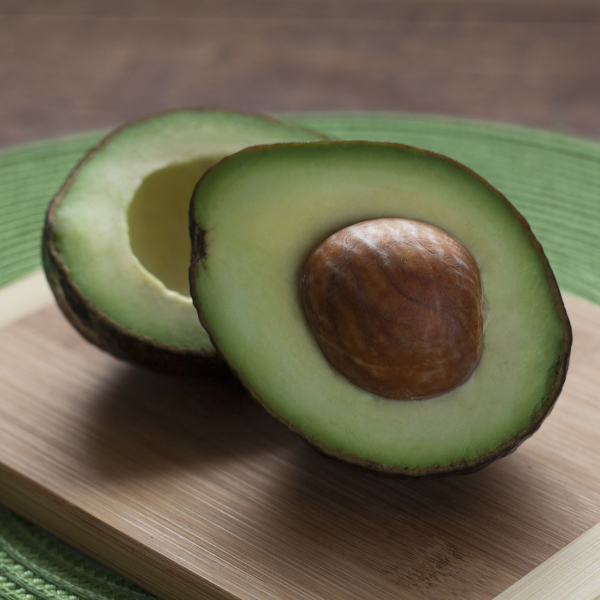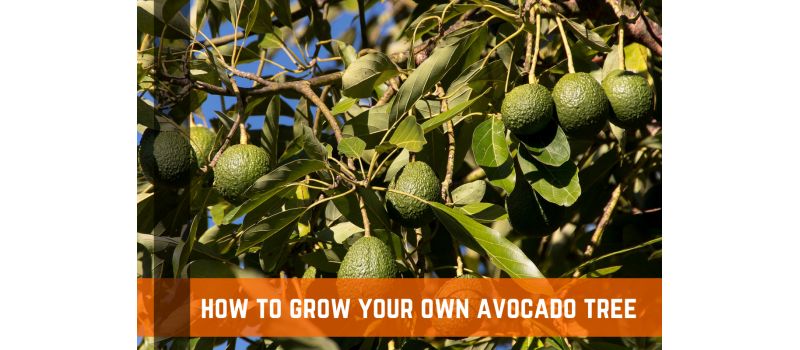Avocado trees are native to central Mexico, where they have been grown for generations. In the 1930s, Hass, the most popular and in-demand commercial avocado variety to date, was initially bred in a garden in Southern California. Today, Mexico and Southern California provide the majority of the world's avocado supply.
Depending on the method of growing used, an avocado tree can take anywhere from 3-15 years to fully grow and bear fruit! Don't fret though, by picking the correct growing method, you can cut that time frame down to 3-4 years.
Growing An Avocado Tree - Pit Method VS Tree Method
It takes a very long time to produce an avocado tree from a pit. It can take 10 to 15 years for an avocado tree to develop fruit after being cultivated from a pit.
On the other hand, depending on the size, kind, and age of the tree you acquire, you can anticipate to start picking your first home produced avocados from a nursery tree within the first few years. By the time they are 3 to 4 years old, most avocado trees cultivated in nurseries have fruit.
Another advantage of growing avocados from nursery trees is the root system: producers employ strong, disease resistant avocado trees, which ensures your young tree's success.
Considering all of this, buying a modest, well-established avocado tree from a nursery is a fantastic idea. Avocado trees come in a variety of sizes; you can pick the size that suits your goals best.
Avocado Tree Growing Requirements
Avocados require a long growth season in a warm, frost free climate with a reasonable amount of humidity. Avocados grow best in temperate subtropical climates. We'll cover avocado tree optimal temperature ranges, soil, fertilizer, water, mulch, and planting instructions.
Temperature - Heat & Cold
Avocados thrive in temperatures that are neither too hot nor too cold. The optimal temperature range is 60 to 85 degrees Fahrenheit.
Most avocado trees in Mexico and South America grow at higher elevations, shielded from the searing heat of the valleys below. When the temperature rises over 90°F, avocado trees can become stressed.
Temperatures above 100°F are likely to cause fruit and flower decline. Damage varies based on the age, moisture, and species of the tree, but severe heat can harm leaves, fruit, and the general health of the tree.
Some avocado trees, once established, can withstand freezing conditions in the upper 20s to low 30s with little harm. Avocados dislike being frozen for long periods of time.
If it doesn't kill them, it will have a negative influence on the growth of their fruit. On particularly cold nights, protecting young trees with frost blankets will help them survive. In the case of a cold snap, a thick layer of mulch at the base of the tree can also assist prevent tree roots from freezing.
Soil, Water, & Fertilizer
Avocados thrive in soil that is somewhat rich yet drains well. A soil with a pH of 6 to 6.5 is excellent soil composition. Avocados trees, like most plants, love water but they can't stand wet circumstances and are susceptible to root rot.
If your yard has hard clay soil, place the tree on a raised mound to encourage adequate drainage. Avocado trees have a naturally shallow root system, therefore mounding is a good way to get over clay or poorly draining native soil.
Planting an avocado tree in a dip or an area where water naturally accumulates is not a good idea.
Do not fertilize your avocado tree with standard NPK fertilizer when it is first planted. You'll want to add some old compost to the planting hole.
For minerals, micronutrients, and overall soil health, use moderate soil additives like basalt rock dust and kelp meal. Once your avocado tree is grown, fertilize it once or twice a year with a well-balanced fertilizer.

How To Plant An Avocado Tree
Choose a position that is as sunny as possible and protected from the wind. Avocado trees should be spaced 15 to 20 feet apart for optimal growth.
In warmer climates, Avocado trees can be planted in the fall months. In colder areas, however, spring planting is preferable so that the infant tree can establish itself before the winter.
Dig a hole somewhat larger than the root system, carefully loosen the roots if they've become wrapped and bound, and set the root system in the hole. The top of the root system should be level with or slightly above the surrounding soil, but never below.
Choose a position that is as sunny as possible and protected from the wind. Avocado trees should be spaced 15 to 20 feet apart for optimal growth.
In warmer climates, Avocado trees can be planted in the fall months. In colder areas, however, spring planting is preferable so that the infant tree can establish itself before the winter.
Dig a hole somewhat larger than the root system, carefully loosen the roots if they've become wrapped and bound, and set the root system in the hole. The top of the root system should be level with or slightly above the surrounding soil, but never below.
Caring For Your Avocado Tree
Avocado trees are low-maintenance. Once or twice a week, your tropical fruit will require a deep watering, with enough time between waterings to allow the soil to dry out. Also, fertilizing trees in their first year is not recommended since fertilizer can burn the roots and cause harm.
The only time you'll need to trim your tree is to remove dead branches in late winter or early spring. Trim your tree lightly if you wish to keep it at a set height by cutting the tree's highest, projecting branch off. Keep any dogs or pets away from your avocado tree.
Harvesting Your Avocado Tree
Avocados do not soften on the tree. Avocados should be picked before they reach the stage of falling off and are allowed to mature on the tree. Avocados are ready to harvest when they reach their full size and don't appear to be growing any larger.
Harvest only one of the larger avocados to see if they're ready, let it mature, then taste it! Allow it to remain at room temperature for 3 to 7 days before attempting to eat it. When gently squeezed with your fingertips, a ripe avocado will "give" slightly.
They're ready to eat if the flesh is soft and creamy, tastes delicious and isn't bitter. I prefer to eat avocados when they have softened little but are still firm. Place avocados in the refrigerator after they seem ripe at room temperature.
Conclusion
Growing an avocado tree is can be a fun and rewarding experience. Avocados are high in healthy fats and nutrition. When starting you avocado tree growing adventure, make sure that you have the right climate and conditions for your avocado tree. Within just a few years, you'll have your very own avocado factory right in your backyard!

